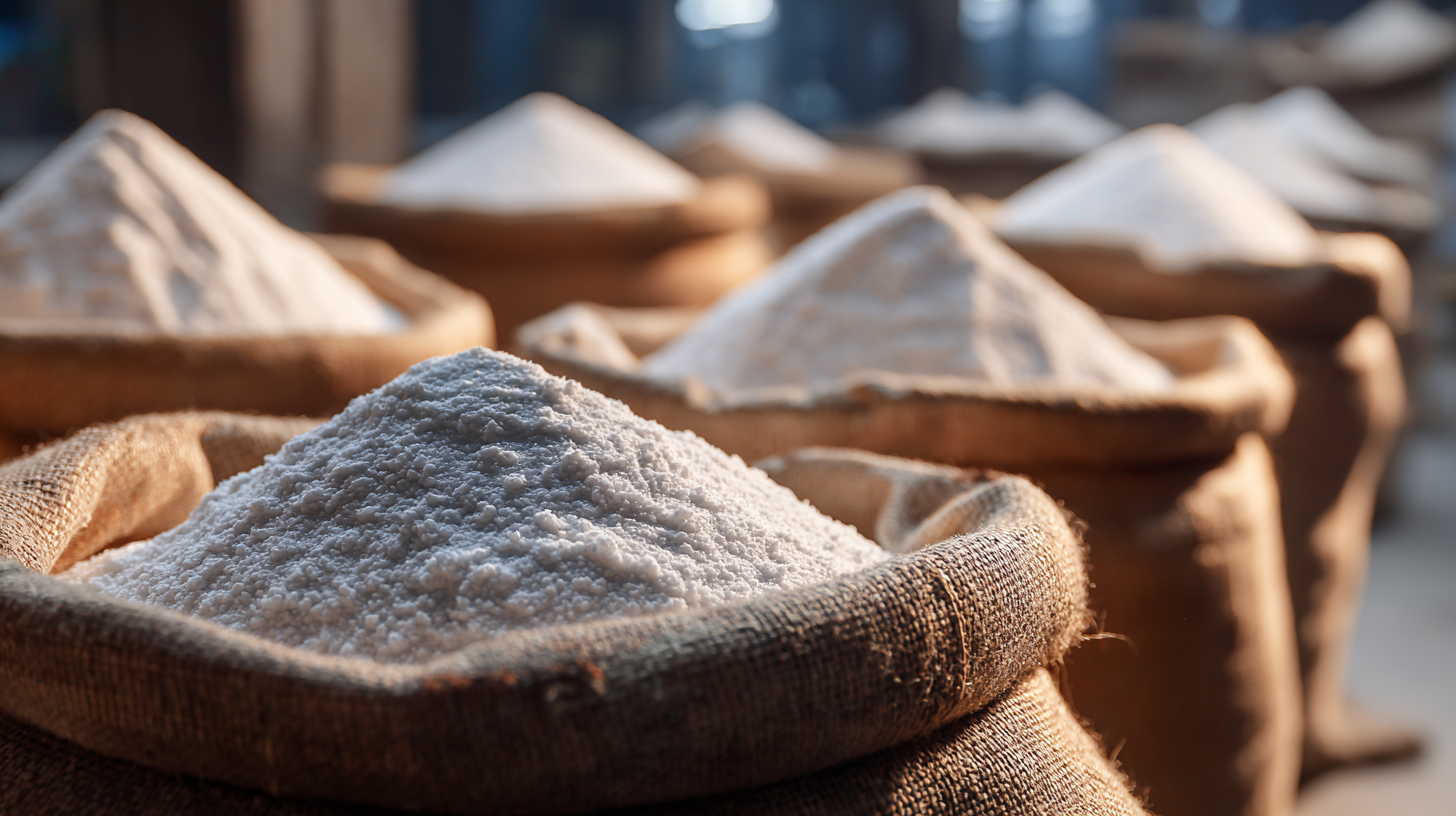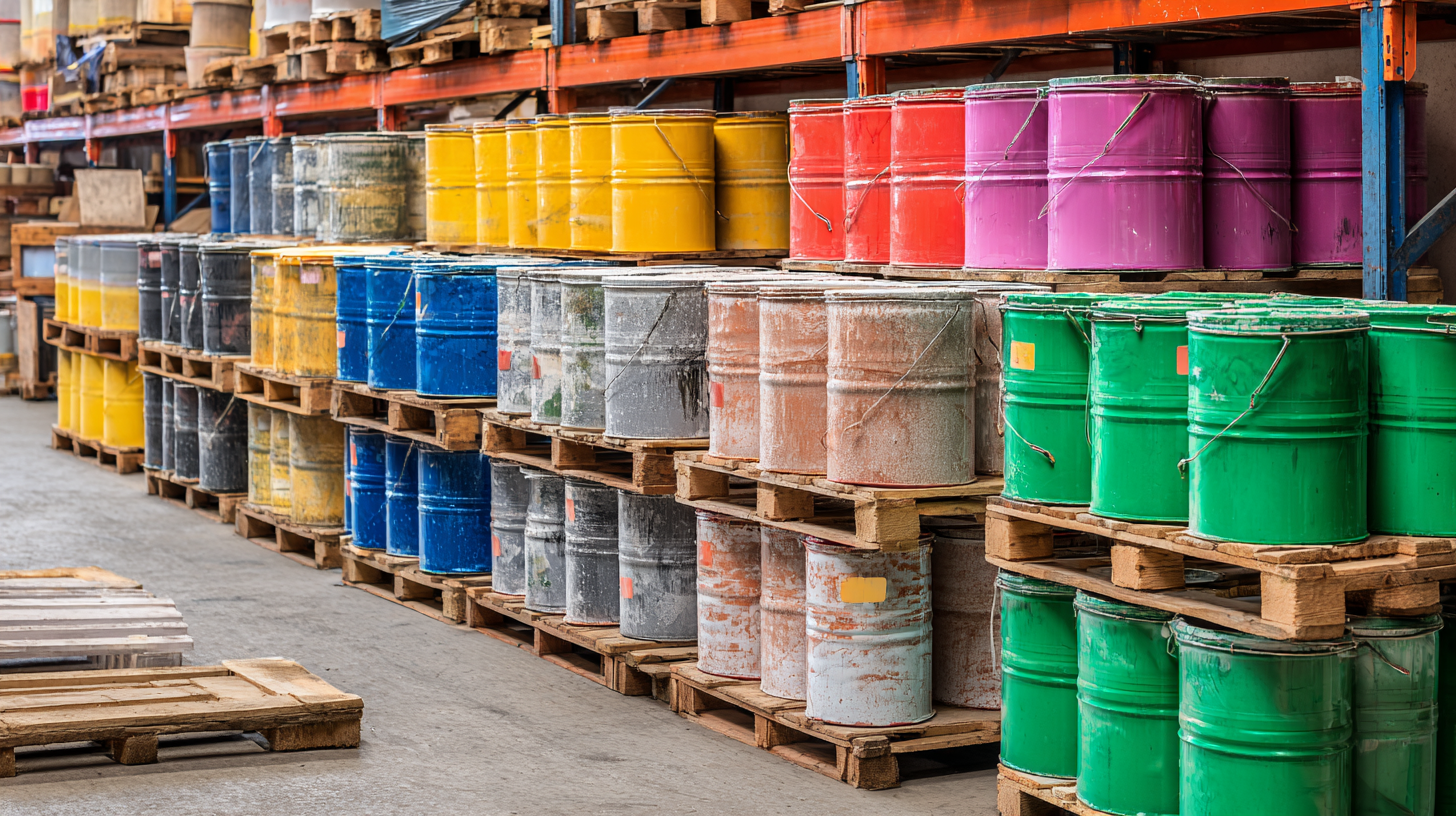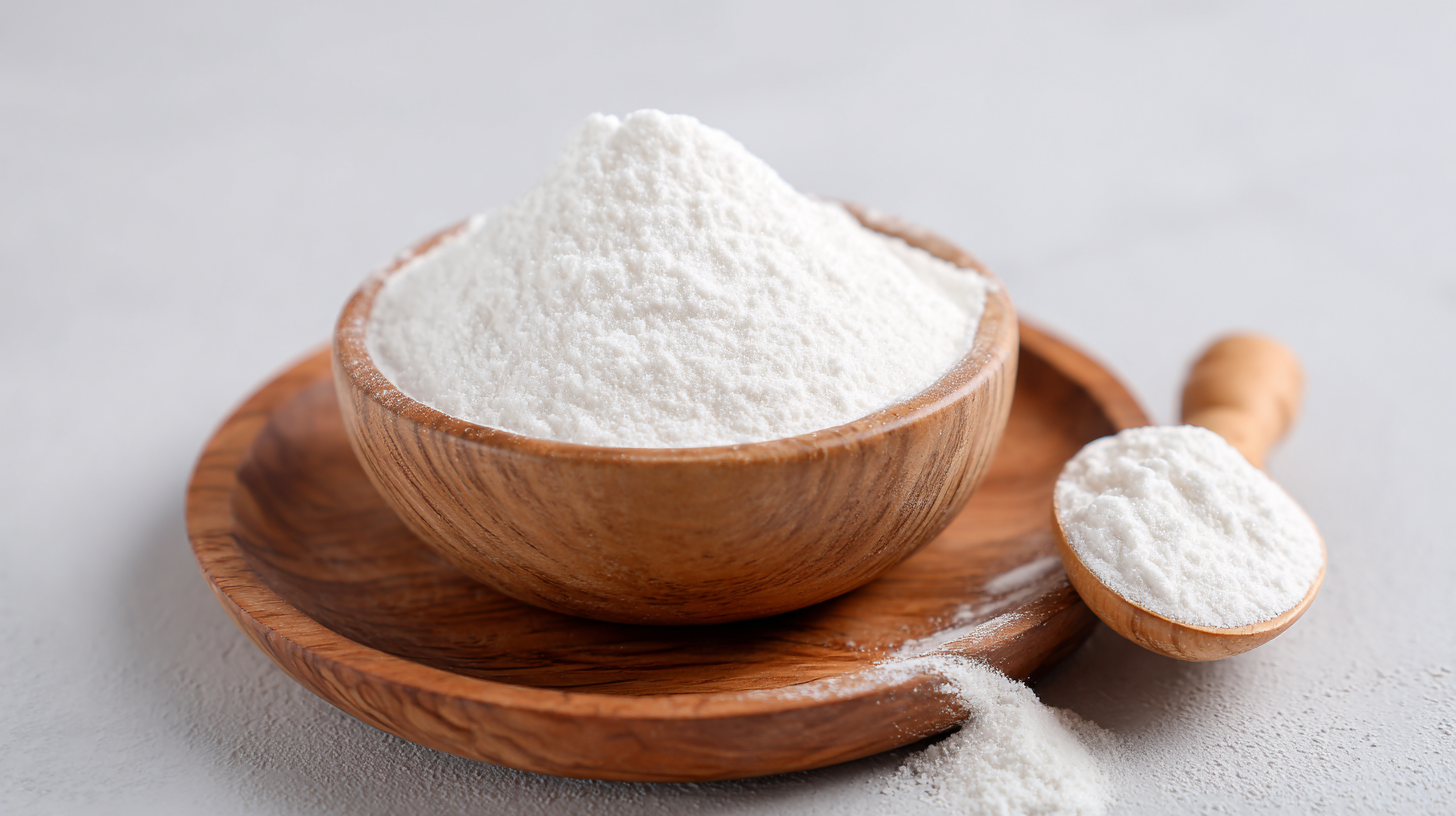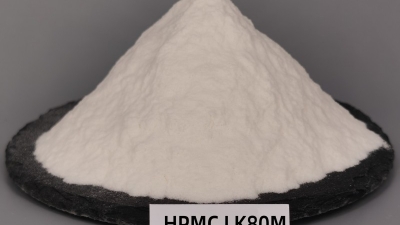Crafting Excellence with Chinese Manufacturing Powered by Best Thickening Agent Hpmc for Detergent
Table of Contents
- The Rise of HPMC in Chinese Detergent Manufacturing
- 5 Key Benefits of Using HPMC as a Thickening Agent
- How HPMC Enhances Detergent Performance and Texture
- Cost Efficiency of HPMC in Large-Scale Manufacturing
- Case Studies: Successful Applications of HPMC in Detergents
- Future Trends: The Growing Role of HPMC in Eco-Friendly Products
- Maximizing Efficiency in Your Formulations with HPMC LK80M: The Ultimate Thickening Solution
- FAQS
- Related Posts
You know, when it comes to manufacturing, the demand for really good cleaning products is just growing and growing. People are paying more attention to hygiene, and their expectations are changing all the time. I read somewhere that, according to Statista, the global detergent market is expected to hit around $190 billion by 2024 — pretty huge, right? That’s a clear sign there’s a big opportunity for companies to get creative with their formulations. At Longou International Business in Shanghai, we totally get how crucial effective additives are for boosting product performance. One standout is our Thickening Agent HPMC for Detergents, which really helps give liquid cleaners that perfect thickness and stability. We’re all about quality when it comes to construction chemical additives, but more than that, we aim to provide solutions that really meet the changing needs of our customers around the world. In this blog, I want to talk about what makes HPMC so special — how it stacks up against other thickening agents — and how it can help manufacturers create cleaning products that stand out from the crowd.

The Rise of HPMC in Chinese Detergent Manufacturing
Lately, you’ve probably noticed that Hydroxypropyl Methylcellulose (or HPMC) has really shaken things up in the world of Chinese detergent-making. It’s a super handy ingredient — a thickener that not only boosts the viscosity and stability of detergents but also makes the whole product feel a lot more premium and effective. Manufacturers really love it because it’s non-toxic, eco-friendly, and plays well with various surfactants and additives. No wonder it’s become a go-to option!
Plus, including HPMC in formulas helps make the detergents more consistent and easier to spread around — which, honestly, makes life a lot easier for consumers. There’s also this big push in China for greener, more sustainable products, and HPMC fits right into that vibe. As local brands keep innovating and stepping up their game, HPMC is pretty much a key player in creating high-quality, effective detergents that really resonate with eco-conscious shoppers. It’s like this ingredient is quietly helping to elevate the whole industry — pretty cool, right?
5 Key Benefits of Using HPMC as a Thickening Agent
When it comes to making detergents, choosing the right thickening agents is super important if you want your product to work well and make customers happy. One ingredient that really stands out is Hydroxypropyl Methylcellulose, or HPMC for short. It’s pretty much a go-to for many formulators because it offers some serious benefits, and industry reports back this up. For example, a recent study from the Global Detergent Industry Analysis highlighted that HPMC is incredibly efficient at thickening—so much so that manufacturers can get the perfect viscosity while actually using about 30% less of the thickening agent. Not only does that cut down on costs, but it also makes the final product more appealing to consumers.
Plus, HPMC’s versatility is a big part of why it’s gaining popularity like crazy. It stays stable across a wide range of pH levels and temperature conditions, which makes it suitable for both liquid and powder detergents. And according to a report from Market Research Future, the global push for eco-friendly and effective cleaning solutions is really boosting demand for natural thickening options like HPMC. Since it’s derived from renewable sources and biodegradable, it ticks all the boxes for today’s environmentally conscious shoppers. All these factors really help solidify HPMC’s spot as a preferred choice for detergent makers trying to deliver top-notch products.
How HPMC Enhances Detergent Performance and Texture
 In the super competitive world of making detergents, adding hydroxypropyl methylcellulose (HPMC) really makes a difference when it comes to boosting how well the product works and how it feels. Basically, HPMC is a kind of cellulose-based compound that acts as a thickener. It helps make the detergent thicker and more stable overall. That means the active ingredients spread out more evenly, so you get a better clean every time you use it.
In the super competitive world of making detergents, adding hydroxypropyl methylcellulose (HPMC) really makes a difference when it comes to boosting how well the product works and how it feels. Basically, HPMC is a kind of cellulose-based compound that acts as a thickener. It helps make the detergent thicker and more stable overall. That means the active ingredients spread out more evenly, so you get a better clean every time you use it.
But here's the cool part—HPMC doesn’t just thicken things up. It also improves the texture, giving the detergent a nice, silky feel that people love. When you want a cleaning product that feels rich and luxurious in your hand, HPMC kind of delivers that vibe. Plus, it helps form a gel-like consistency that stops ingredients from separating and helps the product last longer on the shelf. That stability is a big deal for manufacturers 'cause it means the product stays high quality from the factory all the way to your laundry room, leading to happier customers and probably some pretty loyal ones, too.
Cost Efficiency of HPMC in Large-Scale Manufacturing
When it comes to big-scale manufacturing, cutting costs is a huge deal, and Hydroxypropyl Methylcellulose (HPMC) has really become a big player in the detergent world. I saw a recent report from Grand View Research that predicts the global demand for HPMC will hit around 1.1 billion dollars by 2025—that really shows just how important it’s become in making these products. HPMC acts as a thickener, which means it not only gives detergents the right consistency but also helps keep the product stable over time. That means less waste during production and a longer shelf life for the final product.
On top of that, there's this study in the Journal of Surfactants and Detergents that points out using HPMC can cut raw material costs by about 15 to 20%. For manufacturers trying to make their processes more efficient without sacrificing quality, that’s pretty huge. Plus, HPMC is super versatile—you can add it to different types of detergents, and it will give them that smooth, consistent texture consumers are used to and expect. As companies keep looking for smarter, more eco-friendly, and budget-friendly options, HPMC really stands out as a solution that can help streamline production without sacrificing performance.
Crafting Excellence with Chinese Manufacturing Powered by Best Thickening Agent HPMC for Detergent - Cost Efficiency of HPMC in Large-Scale Manufacturing
| Parameter | Value | Unit | Remarks |
|---|---|---|---|
| HPMC Content in Detergents | 3-5 | % by weight | Optimal performance range |
| Production Cost Reduction | 15 | % Savings | Due to HPMC usage |
| Viscosity Improvement | 5000-8000 | mPa·s | At 2% concentration |
| Shelf Stability | 24 | Months | Testing under standard conditions |
| Product Yield Increase | 10 | % Increase | With HPMC formulation |
Case Studies: Successful Applications of HPMC in Detergents
So, you know HPMC, or Hydroxypropyl Methylcellulose? It's really been making a splash as a key thickening agent in the world of detergents. People are finding it super versatile and effective. I recently came across some cool case studies showing how it's being used in different detergent products.
For example, a big, well-known manufacturer started using HPMC in their laundry liquids, and guess what? They saw about a 30% boost in viscosity—that’s thickness—without messing up the stability of the product. It was all taken from the 'Global Detergent Market Trends 2023' report. This tweak not only made the products feel better to users, but it also helped cut down costs compared to traditional thickeners. Pretty neat, right?
And it doesn’t stop there. In dishwashing liquids, brands that have adopted HPMC are noticing some impressive improvements too. One study I read, published in the 'Journal of Surfactants and Detergents', mentioned that formulations with HPMC can cut through grease like a champ, all while keeping that nice, smooth texture. Because of these benefits, more people are jumping on the bandwagon, and last year alone, the market share for dish soaps with HPMC grew by about 25%. All in all, it's clear that HPMC is really changing the game, both at home and in industrial cleaning. It’s definitely earning its reputation as a real game-changer in today’s detergent scene.
Future Trends: The Growing Role of HPMC in Eco-Friendly Products
You know, as folks become more and more interested in eco-friendly products, the importance of Hydroxypropyl Methylcellulose (HPMC) in making sustainable detergents is really on the rise. I read somewhere that, according to Grand View Research, the global HPMC market is expected to hit around 3.29 billion USD by 2025, growing at about 6.2% annually. It’s all about people turning towards natural and biodegradable ingredients these days, and HPMC fits right in as a thickening agent that balances great performance with caring for the environment.

What’s pretty cool is that HPMC’s versatility means manufacturers can create cleaning products that work well but are also gentler to the planet. Research shows that formulations using HPMC can actually help cut down on harsh surfactants and solvents—so, safer for us and aquatic life too.
And with tighter rules coming into play around chemical use, going eco-friendly isn’t just a trend anymore, it’s pretty much a must. As brands want to showcase their sustainability efforts, I think HPMC will end up being a key player in shaping the future of cleaning products we buy and use every day.
Maximizing Efficiency in Your Formulations with HPMC LK80M: The Ultimate Thickening Solution
In the quest for enhancing formulation efficiency across various industries, MODCELL ® HPMC LK80M stands out as an ideal thickening solution. This high-performance hydroxypropyl methyl cellulose (HPMC) is derived from naturally purified cotton cellulose, ensuring not only effectiveness but also a commitment to sustainability. Its remarkable thickening ability allows formulators to achieve desired viscosities with precision, optimizing not just the physical properties of their products but also the user experience.
MODCELL ® HPMC LK80M offers a multitude of advantages that enhance its versatility in applications. With excellent water solubility and retention, it maintains stable performance even under varying pH levels and temperatures. This attribute is particularly beneficial in industries like pharmaceuticals and cosmetics, where consistency is key. Furthermore, its gelling properties and cement film formation make it indispensable in construction applications, providing the necessary support and durability for building materials.
The multifunctional nature of MODCELL ® HPMC LK80M also extends its use to the food industry, where it can improve texture and mouthfeel while ensuring a stable product shelf life. Whether you are formulating creams, sauces, or construction adhesives, incorporating this innovative thickening solution will undoubtedly enhance the quality and efficacy of your products, helping you stay ahead of the competition.
FAQS
: Hydroxypropyl Methylcellulose (HPMC) is a versatile thickening agent used in detergent manufacturing. It enhances the viscosity and stability of detergent formulations, leading to superior performance and improved consumer experience.
HPMC is non-toxic and biodegradable, making it an environmentally friendly choice. Its incorporation in detergents aligns with the growing demand for sustainable products in the Chinese market.
Using HPMC improves consistency, spreadability, and product stability, making it easier for consumers to apply detergents and ensuring that the products have a longer shelf life.
HPMC can reduce raw material costs by approximately 15-20%, leading to significant cost savings for manufacturers while allowing them to maintain high-quality standards.
The global demand for HPMC is expected to reach USD 1.1 billion by 2025, indicating its growing importance in the detergent industry.
Manufacturers are increasingly using HPMC due to its ability to enhance product performance, achieve cost efficiency, and align with the shift towards eco-friendly practices in the detergent industry.
HPMC enhances the viscosity and spreadability of detergents, making them easier to apply and use, which improves overall user satisfaction.
HPMC improves product stability, which helps to reduce wastage during production and extends the shelf life of detergent products.
Yes, HPMC is versatile and can be incorporated across different detergent formulations, providing a consistent texture that consumers expect.
The rising consumer demand for eco-friendly and high-quality products, along with the need for cost-efficient manufacturing processes, are key trends driving the use of HPMC in detergent formulations.
Blog Tags:







